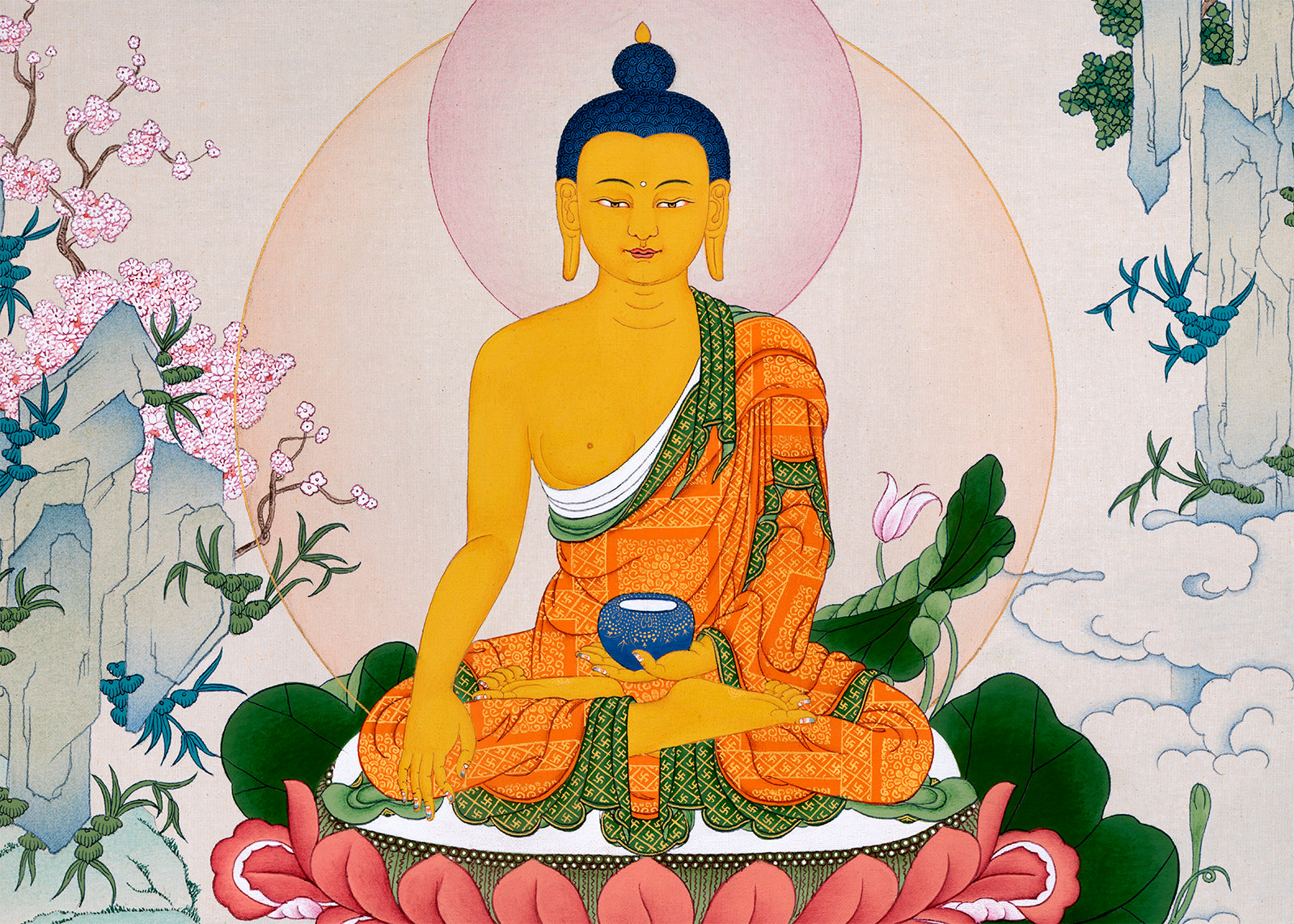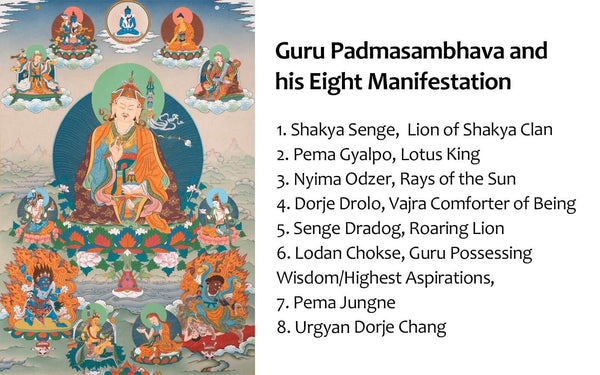Guru: The Great Master
The Guru-disciple relationship is fundamental to all schools of Tibetan Buddhism. In Vajrayana Buddhism the role of Guru is clearly defined and, it is the essential core of the tradition. The transmission of Knowledge from Guru to the disciple is a practice that predates to generations back.
The importance of the relationship between teacher and the student was recognized long way back during early Buddhism era. As the Pali verse explains:
"The man should venerate him from whom he learns the Dharma as the Gods venerate Indra. The learned person thus being venerated, being pleased with disciple, makes the Dharma manifest."
The life story of Shakyamuni Buddha, in itself also embarks the evidence of the Guru-disciple tradition. When he left the palace and wandered to places in search of truth, he apprenticed with different types of teachers. He mastered various meditative and yogic disciplines. But afterward his enlightenment, he decided to postpone his Parinirvana, to teach Dharma. He stayed on earth to promote universal wellbeing and decrease the sufferings of the sentient beings.
A Buddha as the one who knows, lives and transmits the Dharma, is the paradigmatic Guru.

Meanwhile Mahayana tradition introduced incipent Guru as a Noble friend. A companion on the spiritual path whose positive influence helps the aspirant to reach the enlightenment. As Mahayana Sutra explains:
It is from a spiritual friend that bodhisattva learn the practice of Bodhisattva. it is through spiritual friends that all bodhisattva's virtues are perfected: spiritual friends are the source of the stream of all bodhisattva vows: the roots of goodness of all bodhisattva are produced by spiritual friends. The provision for enlightenment are produced by spiritual friend. the purification of all ways to enlightenment derives from spiritual friends; the accomplishment of all studies of bodhisattvas are based on spiritual friends"
Thus, the Noble friend is an essential peer who helps us withstand the temptations of worldliness and devote to the Six Perfections (Paramita): Generosity, Discipline, Tolerance, Diligence, Meditation and Wisdom.
In Vajrayana, Guru or the spiritual guide is essential to advance in the path of Buddhahood. He is the supreme of the Tantric universe, the portal of all initiations, teachings and blessing.
Together the Guru and disciple embark on a relationship that is psychologically, emotionally and spiritually profound. The relationship is believed to be karmically destined and thus, a student will naturally be drawn towards a teacher.
Guru takes the full responsibility to look after the disciples' training and his progress on every level. He empowers and permits student to visualize deities and aids the meditation.
Guru and Disciple: The Unbreakable Bond
The continual transmission of Teachings and Blessings is highly valued in Buddhism, regardless of the school one practices. These transmissions come from masters and students who have transcended the cycle of suffering and delusion and gained the highest realization of the pure nature of mind and reality in a lineage that has continued unbrokenly. As a result, it is believed that if a person did not have a teacher or Master functioning as a guide to lead him to the highest degree of realization, the concept of that person obtaining Buddhahood would never emerge.
There are two linkages for any transmissions of precepts or empowerments: one from the master holding the principles or lineage and the other from his disciples seeking to accept them. Both must meet specific requirements for the chain to be robust. Because of this, the Vinaya, Bodhisattva, and Tantrayana traditions that explain the interaction between the spiritual Teacher and the pupil go into considerable length to define the traits of both parties.
The relationship with a spiritual mentor, or guru, lies at the very core of the Vajrayana path. The portal to the Dharma's teachings and practices, kept clean by an unbroken line dating back to the Buddha, is opened by our Teacher. This is what lineage means; it is the continuous transmission of spiritual teachings from Teacher to pupil, beginning with the Buddha himself teaching his students and continuing with them teaching their successors until, at last, we get the same spiritual instruction today.
The relationship of Guru and disciple can be described with the metaphor of an unlit candle. One might think of themselves as being like a candle that hasn't been lighted, and the Buddha, with his wholly awakened mind, as the candle flame to illustrate the link between lineage, spiritual Teacher, and our own Buddha Nature. He lighted his followers' candles with his teachings, causing them to blaze brilliantly with illumination. Through the ages, they, in turn, passed the flame on, lighting the candles of their students, who in turn did the same for them. The candle flame continued to burn as brightly as when it was first lit until it reached us and lit our candle, allowing us to shine as brightly on our own.
Practitioners are recommended to take their time choosing the right Teacher in every Buddhist scripture. When we do, we should spend several years becoming acquainted with them to determine if they are, in fact, the perfect instructor for us. Similarly, the Teacher will evaluate us to see if we are the proper pupil. Once this highly particular tie has been formed, it is crucial to respect it, remain committed to it, and carefully heed the Teacher's instructions.
This is perfectly illustrated in the lives of great gurus like Marpa and Milarepa. The initial phase of the teachings may be harsh. The learning pathway may be full of ups and downs. But just like Milarepa, one should fully believe and trust in their respective Guru and have faith in their teachings.
We frequently cling tenaciously to these old, familiar methods when faced with our mind, with its negative inclinations and restrictive habits. It takes effort to lay them aside and expose ourselves to the more profound truth of who we are. By reflecting our Buddha Nature to us, the Teacher aids us. We first start to see it in him. After that, we notice it in ourselves, everything, and everyone around us.


